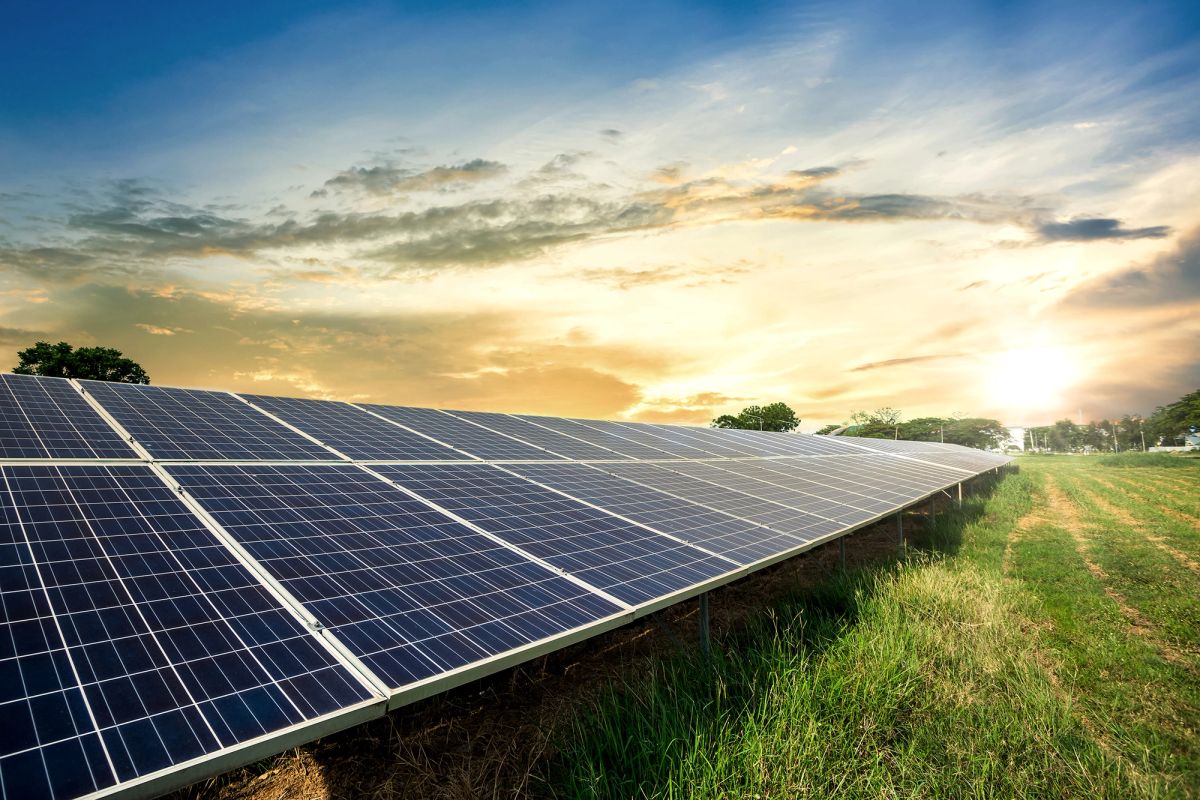Solar Farms - What You Need to Know
In the pursuit of a cleaner and more sustainable energy future, utility-scale solar farms emerge as powerful contributors to the ongoing transformation of our global energy landscape.
This article delves into the intricacies of these expansive solar energy projects, shedding light on their pivotal role in diversifying the energy mix and advancing the adoption of clean energy solutions.
As the demand for renewable power sources intensifies, utility-scale solar farms have risen to prominence, offering substantial power output. By harnessing the abundant energy from the sun, these solar farms contribute not only to reducing carbon footprint but also to fostering a robust and resilient energy infrastructure.
Join us in unravelling the key components of solar technology as a form of renewable energy, understanding its impact on the broader energy ecosystems, and exploring the boundless potential solar farms hold in shaping a sustainable future powered by the sun.
What is a solar farm?
A solar photovoltaic system, or, to make your lives a little easier, a PV system, is an electric power system designed to supply usable power using photovoltaic technology. Usually composed of one or more solar panels combined with an inverter and other electrical and mechanical hardware that use energy from the sun to generate electricity.
A solar farm is a large collection of solar photovoltaic panels that absorb energy from the sun and convert it to electricity. Solar farms are known by multiple terms including (but not limited to) solar parks, solar gardens, solar power plants, solar power stations, and photovoltaic power stations.
For the most part, we'll stick with the term solar farms in this article.
Where are solar farms built?
PV systems can vary greatly in size, from small rooftop solar arrays to massive utility-scale solar farms. Solar panels are typically ground-mounted or roof-mounted.
There is no ‘best' mounting option, with both options having advantages and disadvantages. Much depends on available roof space, the roof's pitch and facing, and any restrictive covenants related to roof mounting.
Similarly, you will have to assess whether the roof can hold the additional weight of the panels and whether your insurance company will allow solar panels to be installed on the property.
Meanwhile, solar panels on the ground can work equally well as roof mounting but will use up ground space (they often use up acres of land). For this reason, they are typically found on agricultural land. Again, planning permission may be required for solar panels on the ground.
The best case for solar is when a site has a constant daytime electrical load 7 days a week - i.e. production facilities or sites with a lot of refrigeration or A/C.
Top 5 Considerations for Solar Farms
- Insurance: Will your insurance company allow solar on your roof from a fire hazard perspective?
- Roof structure: Can your roof structure take the additional loading?
- Interconnect to LV infrastructure: Are there spare ways on the LV panels and is the distance from the inverter reasonable <50m
- Local grid code compliance: What is the process for connecting an embedded generator?
- Performance monitoring: How do you know you will be getting the most from the solar plant that you have invested in? How do you know the panels are not fouled or inverters not operating?
Top electrical considerations for Solar Farms:
- Load: What is the max load the site can use in June at midday?
- Inverter siting: Is there an area, inside or outside, as close as possible to the array and electrical plant room that is suitable for siting the inverters?
- Existing generators: Are there any existing generators that need to be isolated from the array in the event of a grid failure or auto start?
- EGIP: Wherever possible, inverters should be sited together to minimise the amount of G10 relays required.
Why should the manufacturing industry use solar farms?
Renewable energy projects have seen rapid advancements in the past few decades and collectively are beginning to overtake fossil fuels as the primary means of energy production.
Solar power is among the most prolific forms of renewable energy and is the most widely used due to the many benefits it brings.
- Renewable energy source: Let's start with the most obvious benefit first; solar energy is one of the world's few truly renewable energy sources. Scientists estimate the sun has 5 billion years of energy left in it, meaning that we can count on the sun to shine for many years to come.
- Lower energy bills: Another significant benefit for businesses is that it can significantly reduce energy bills. Generating your own electricity on-site means that your business is less reliant on the electricity grid and a traditional utility company to power your business.
In a nutshell, the more energy you produce, the more money you will save. It also has the added bonus of taking pressure off the grid, leaving more electricity for consumers. - Low maintenance costs: Another attractive aspect of PV solar systems is the low maintenance costs involved in preserving them. Since they have no moving parts, no wear or tear is involved.
So, once you've covered the initial cost, you can expect very little spending on maintenance and ongoing repair work. Most owners manage by cleaning them a few times a year.
There are certain benefits applicable only to pharmaceuticals. For instance, the pharmaceutical industry is power-intensive, with processes requiring uninterrupted and extensive energy flow in the manufacturing units for the production process.
Solar energy can provide both. It can be used in various applications: blending, granulation, milling, coating, tablet pressing, filling, and water heating. At the same time, it is a powerful resource that is more cost-efficient and resource-efficient in the long run.
Furthermore, adopting solar panels is a visible way for pharma companies to demonstrate their commitment to public health and social responsibility.
As experts in medicine, with the ultimate goal of preserving life, the pharmaceutical industry has a professional and moral responsibility to take a leading role in reducing the environmental impact of their industry.
Making Pharma Greener with Solar Power
The pharmaceutical industry plays a pivotal role in the functioning of society. The pharmaceutical industry is a crucial asset to the global economy, driving medical progress through research and developing new medicines that improve health and quality of life for patients around the world.
Pharma, as with many other industries around the world, has a significant impact on the environment, emitting more greenhouse gases than even the automotive sector.
There is a desire within the industry to make a concerted effort to reduce the carbon footprint of the pharmaceutical industry. In a Global Data survey conducted last year, 43% of respondents believed the environment to be the most pressing issue for the pharmaceutical industry to address. The question is, how?
One solution is the adoption of industrial solar PV.
Many pharma companies have already begun adopting renewable forms of energy (primarily solar farms, though also wind farms, for example) to curb pollution and bring in more savings.
Solar projects play a key role in lowering the negative impact of fossil fuel use pharmaceuticals, along with many other industries. As the industry wakes up to the role of sustainability in business strategies, solar farms have emerged as an excellent alternative to thermal power resources.
The future health of the planet
Climate change is no longer a slowly accumulating danger but a present threat to human well-being and the health of the planet.
It's only a matter of time before governments begin mandating a reduction of greenhouse gas emissions that may impact the pharmaceutical industry and push companies toward solar generation.
The industry can wait for external bodies to direct how it acts or take the lead and embrace its role as a global caretaker – not just of individual patients, but the one world which we all share.
How CoolPlanet can assist you with solar installations for your company
We help you navigate the increasingly complex solar industry. Rooftop solar projects are the easiest to get as there are the least amount of issues. Ground-mounted solar requires a geotechnical survey which is more onerous.
If you opt for ground-mounted solar, we manage all the ESB electrical grid permissions and applications to EirGrid. We install a G10 relay that prevents power from going back to the electric grid if there is a power cut. This protects any technicians working on the grid.
If you combine solar with an industrial heat pump you could have a 3-year payback. As opposed to a 5-year with solar alone. If you include a heat pump, EV chargers and solar then you will receive a grant of up to 30% of funding.
Furthermore, if you put in commercial battery storage (i.e. energy storage for excess solar energy created), these can be leveraged as an additional revenue stream from selling services to the power grid. This is also known as demand side response.
CoolPlanet provides end-to-end decarbonisation services looking after everything from design to energy grant applications, planning applications to procurement and installation. No shutdown of your site operations is required.
Conclusion
Solar farms are playing a pivotal role in meeting the escalating global demand for sustainable power. As we witness the ever-expanding number of solar panel farms and the evolution of solar power systems, it becomes clear that these large-scale ventures are instrumental in reshaping our energy landscape.
With the need to address escalating energy consumption and combat climate change, the question arises: How can we collectively accelerate the integration of utility-scale solar farms into mainstream energy strategies?
Delve deeper into the strategies for achieving net-zero emissions by downloading our insightful report, offering valuable perspectives and practical steps about how large businesses can propel themselves into the forefront of the global energy transition.
How will your engagement in this transformative process contribute to a more sustainable and resilient energy future?
Explore the report and take the first step toward realising how your business can decarbonise at scale.





